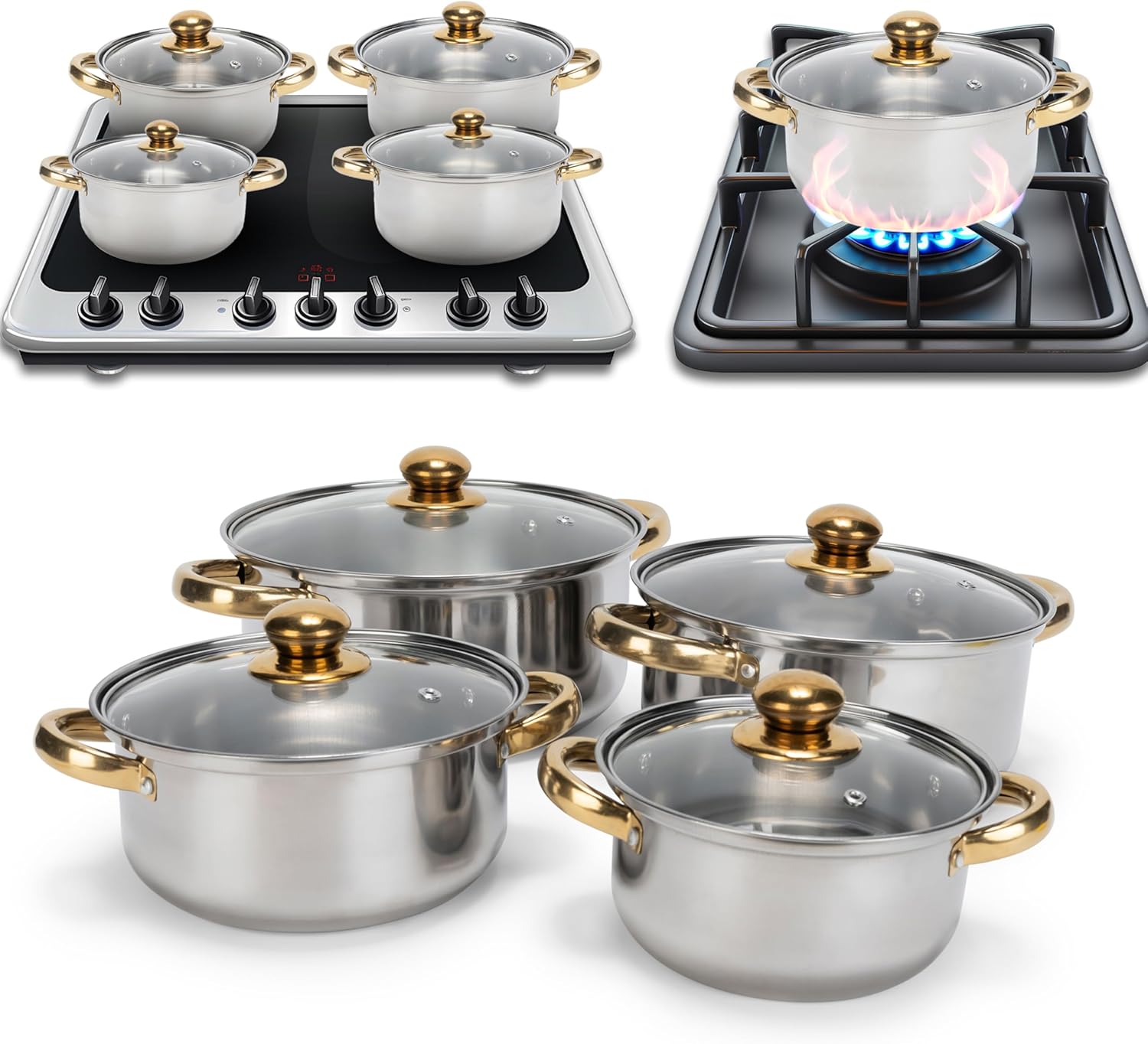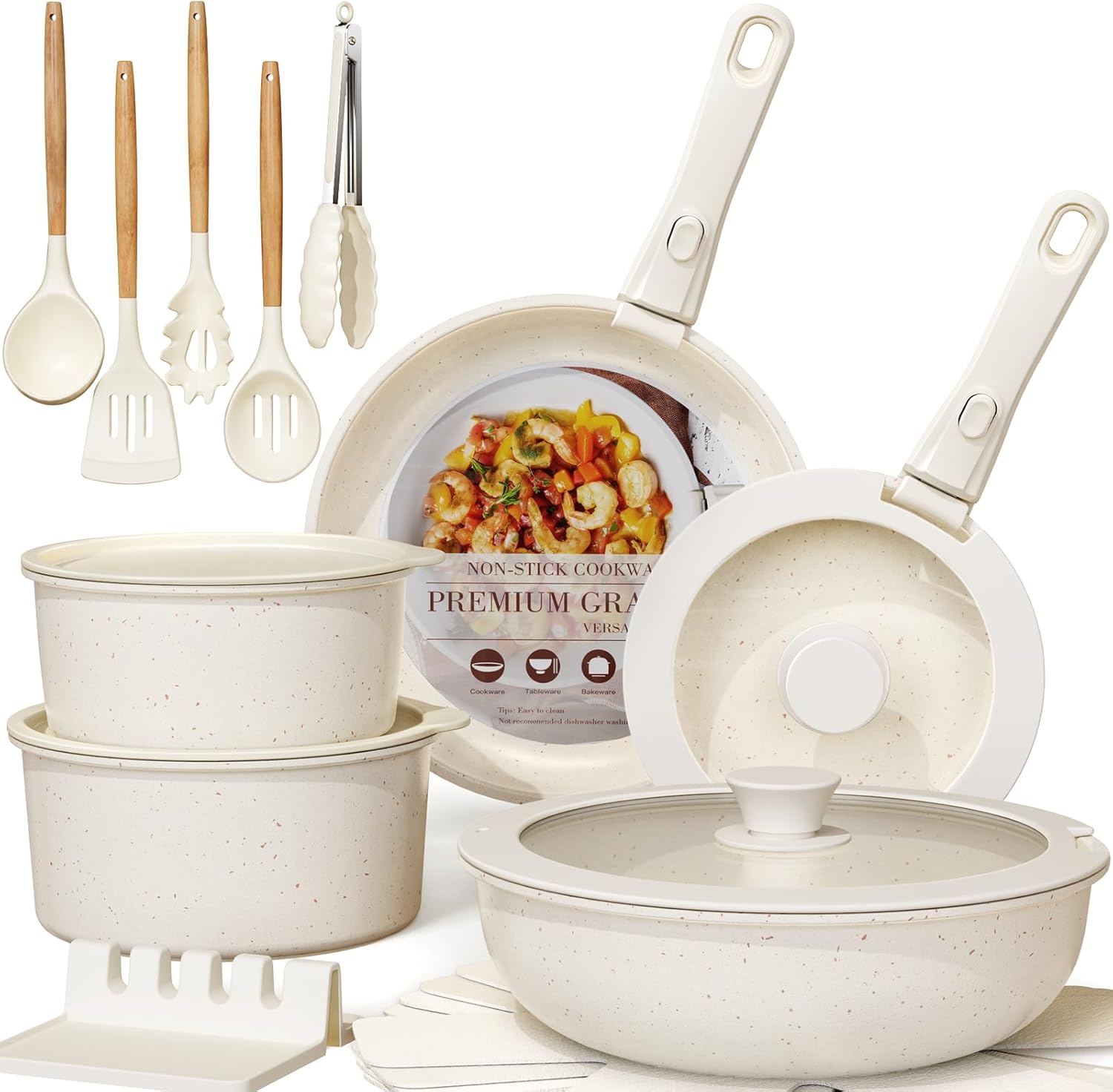Polishing cast iron cookware involves cleaning the surface and seasoning it with oil. Use a fine abrasive and apply a thin coat of oil to restore shine and protect the iron.
Cast iron cookware is beloved for its heat retention and durability. Over time, these pans can lose their luster due to grime and seasoning buildup. Regular polishing not only enhances their appearance but also improves their cooking performance. Proper maintenance ensures your cast iron skillet lasts for generations.
Techniques for polishing vary, but they generally involve scrubbing, cleaning, and re-seasoning. Embracing a consistent care routine will keep your cookware in top shape, making meal preparation more enjoyable. Learn how to effectively polish your cast iron and elevate your culinary experience.

Credit: www.reddit.com
The Importance Of Cast Iron Maintenance
Maintaining cast iron cookware is crucial for its lifespan and effectiveness. Proper care helps keep your pans non-stick and rust-free. A well-maintained cast iron skillet can last for generations. Understanding maintenance techniques ensures you get the best performance from your cookware.
Why Regular Care Matters
Regular care of cast iron cookware protects its surface. It prevents rust and enhances its natural non-stick properties. Here are key points on why maintenance is vital:
- Rust Prevention: Regular seasoning creates a protective layer.
- Better Cooking Experience: A well-maintained skillet cooks evenly.
- Flavor Enhancement: Seasoning builds flavor over time.
- Health Safety: Proper cleaning avoids harmful residues.
Longevity And Performance Benefits
Investing time in maintenance boosts the longevity of your cookware. Here are the benefits:
| Benefit | Description |
|---|---|
| Increased Lifespan | Proper care can make your cast iron last decades. |
| Enhanced Cooking | Well-maintained pans heat evenly for perfect meals. |
| Reduced Food Sticking | Regular seasoning improves the non-stick surface. |
| Cost-Effective | Durable cookware saves money over time. |
Regular maintenance leads to a superior cooking experience. Follow the right techniques to enjoy your cast iron cookware for years.
Getting Started: Cleaning Basics
Polishing cast iron cookware starts with proper cleaning. Clean cookware helps maintain its seasoning. Follow these steps for effective cleaning.
Initial Cleaning Steps
Begin with these simple steps:
- Gather Supplies: You need hot water, a scrub brush, and a cloth.
- Rinse: Rinse the cookware under hot water.
- Scrub: Use the scrub brush to remove food particles.
- Dry: Immediately dry the cookware with a cloth.
- Oil: Apply a thin layer of vegetable oil.
These steps keep your cookware clean and ready for use.
Dealing With Rust And Stains
Rust and stains can happen. Follow these methods to restore your cookware:
| Issue | Solution |
|---|---|
| Rust | Use fine steel wool to scrub the rust away. |
| Stains | Make a paste of baking soda and water. Scrub gently. |
After cleaning, rinse thoroughly and dry completely. Apply oil to protect the surface.
Polishing Techniques For Cast Iron
Polishing cast iron cookware restores its shine and enhances its performance. Proper techniques ensure your cookware remains non-stick and visually appealing. Follow these steps to achieve a beautiful finish.
Choosing The Right Tools And Materials
Selecting the correct tools is vital for polishing cast iron. Here’s a list of recommended items:
- Steel Wool: Use fine-grade steel wool for effective polishing.
- Cast Iron Cleaner: Look for a cleaner specifically designed for cast iron.
- Vegetable Oil: Choose oil for seasoning your cookware after polishing.
- Soft Cloth: A lint-free cloth works best for buffing.
These items help achieve a smooth, shiny surface. Avoid using harsh chemicals that can damage the cast iron.
Step-by-step Polishing Guide
Follow these steps to polish your cast iron cookware effectively:
- Clean the Cookware: Wash it with warm water and cast iron cleaner.
- Scrub Gently: Use fine-grade steel wool to remove rust and grime.
- Rinse Thoroughly: Ensure all cleaner residues are washed away.
- Dry Completely: Wipe it dry with a soft cloth to prevent rust.
- Apply Oil: Rub a thin layer of vegetable oil on the surface.
- Buff the Surface: Use a soft cloth to buff the cookware to a shine.
- Season the Cookware: Place it in the oven at 350°F for an hour.
Follow these steps regularly to maintain your cast iron cookware. Polishing not only enhances appearance but also improves cooking performance.

Credit: www.reddit.com
Seasoning: The Key To A Non-stick Surface
Seasoning cast iron cookware creates a durable, non-stick surface. This process involves applying oil to the cookware. Heat transforms the oil into a hard, protective layer. This layer prevents rust and enhances cooking performance.
The Role Of Seasoning In Shine
Seasoning is essential for maintaining the shine of your cast iron. A well-seasoned pan looks great and performs well. The seasoning creates a barrier that prevents food from sticking. It also helps to protect the iron from moisture and rust.
Over time, the seasoning builds up and improves the non-stick properties. A shiny, well-seasoned surface makes cooking and cleaning much easier.
How To Properly Season Your Cookware
Proper seasoning involves a few simple steps. Follow this easy guide to achieve great results:
- Start with clean, dry cookware.
- Apply a thin layer of vegetable oil or flaxseed oil.
- Use a paper towel to spread the oil evenly.
- Preheat your oven to 375°F (190°C).
- Place the cookware upside down in the oven.
- Bake for 1 hour to allow the oil to bond with the cast iron.
- Turn off the oven and let the cookware cool inside.
Repeat this process for best results. Regular seasoning maintains the non-stick surface. A well-seasoned pan improves over time, making it a joy to use.
Troubleshooting Common Issues
Polishing cast iron cookware can lead to some common problems. Understanding how to fix these issues helps maintain your cookware’s quality. Here are two frequent problems and their solutions.
Sticking Food
Food sticking to your cast iron can be frustrating. Here are some reasons this happens:
- Insufficient seasoning
- High cooking temperatures
- Using the wrong cooking oil
To prevent food from sticking, follow these steps:
- Ensure your pan is well-seasoned.
- Use oils with high smoke points, like canola or avocado oil.
- Preheat your pan before adding food.
Re-season your cookware if sticking persists.
Dull Or Patchy Surfaces
A dull or patchy surface can occur over time. This can happen due to:
- Improper cleaning methods
- Inadequate oiling
- Exposure to moisture
To restore shine, try these methods:
- Clean the surface with a mixture of salt and oil.
- Re-season the cookware after cleaning.
- Store your cookware in a dry place.
Regular maintenance prevents dullness and patchiness.
Advanced Maintenance Tips
Polishing cast iron cookware keeps it looking great and functional. Following these advanced maintenance tips helps maintain your cookware’s shine and longevity. Proper care ensures your kitchen tools last for generations.
Maintaining Shine Over Time
To keep your cast iron shiny, follow these steps:
- Clean regularly: After each use, wash with hot water and a brush.
- Avoid soap: Soap can strip the seasoning. Use minimal soap if necessary.
- Dry immediately: Dry the cookware right after washing to prevent rust.
- Oil lightly: Apply a thin layer of vegetable oil after drying.
Use the following table for additional shine tips:
| Action | Frequency |
|---|---|
| Seasoning | Every few months |
| Polishing | As needed |
| Deep cleaning | Once a year |
When To Re-season
Re-seasoning is crucial for optimal performance. Watch for these signs:
- Food sticks: If food starts sticking, it’s time to re-season.
- Discoloration: A dull or grey appearance means the seasoning has worn off.
- Rust spots: Rust indicates a need for immediate re-seasoning.
Follow these steps to re-season:
- Clean: Remove any rust or old seasoning.
- Dry: Ensure the cookware is completely dry.
- Apply oil: Use flaxseed oil or vegetable oil.
- Bake: Place the cookware upside down in the oven at 450°F for one hour.
This process restores the non-stick surface and enhances shine.
The Do’s And Don’ts Of Cast Iron Care
Maintaining your cast iron cookware requires special attention. Proper care keeps it in great shape. Follow these do’s and don’ts for long-lasting performance.
Safe Cleaning Agents
Choosing the right cleaning agents is crucial. Here are some safe options:
- Hot Water: Use it to rinse off food residue.
- Coarse Salt: Acts as a natural scrubber.
- Vegetable Oil: Good for seasoning after cleaning.
- Dish Soap: Use sparingly, only if necessary.
Avoid any harsh chemicals. They can damage the seasoning. Stick to mild cleaners for best results.
Practices To Avoid
Some practices can harm your cast iron cookware. Here’s what to avoid:
- Soaking: Do not soak your cast iron in water.
- Dishwasher: Never put cast iron in the dishwasher.
- Steel Wool: Avoid using it, as it scratches the surface.
- Cooking Acidic Foods: Limit cooking tomatoes or citrus.
Following these guidelines helps maintain your cast iron. Treat it well for years of delicious meals.
Transforming Old Cookware: Restoration Projects
Restoring old cast iron cookware can be a rewarding journey. This process not only revives vintage pieces but also enhances their value. Many people cherish their family heirlooms, and bringing them back to life offers a sense of nostalgia. Let’s explore how to assess and restore these treasures.
Assessing Condition And Value
Before diving into restoration, evaluate the condition of your cookware. Check for:
- Rust: Look for reddish-brown spots.
- Cracks: Inspect for any visible fractures.
- Warping: Ensure the bottom is even.
- Original markings: Check for brand names or logos.
Knowing these factors helps determine the piece’s value. Vintage cast iron can be worth a lot. Research similar items online or consult experts.
Restoration Steps For Vintage Pieces
Follow these steps to restore your cast iron cookware:
- Clean: Remove rust using steel wool or a wire brush.
- Wash: Use hot, soapy water and rinse well.
- Dry: Completely dry the piece to prevent new rust.
- Season: Apply a thin layer of vegetable oil.
- Bake: Place it upside down in an oven at 375°F for an hour.
Repeat the seasoning process several times for a better non-stick surface. Enjoy cooking with your revived cookware!

Credit: www.instructables.com
Frequently Asked Questions
How Do You Polish Cast Iron Cookware?
To polish cast iron cookware, start by cleaning it thoroughly with hot water and a stiff brush. Avoid soap, as it can strip the seasoning. Once clean, apply a thin layer of vegetable oil or flaxseed oil. Heat the cookware in the oven to bond the oil to the surface, enhancing its shine.
What Is The Best Oil For Polishing Cast Iron?
Flaxseed oil is considered the best for polishing cast iron. It has a high smoke point and creates a durable seasoning layer. Other options include canola oil or vegetable oil. Choose an oil that can withstand high temperatures, ensuring long-lasting protection and a smooth finish for your cookware.
Can You Use Steel Wool On Cast Iron?
Using steel wool on cast iron is not recommended for regular cleaning. It can scratch the surface and remove the seasoning layer. However, for heavily rusted pieces, fine steel wool can be used cautiously. Afterward, re-season the cookware to restore its protective coating and prevent further rust.
How Often Should You Polish Cast Iron?
Polishing cast iron cookware isn’t necessary frequently. It’s typically done after deep cleaning or when the surface appears dull. Regular maintenance, like re-seasoning after cooking, helps keep your cookware in top shape. Aim to polish every few months or as needed to maintain its longevity and performance.
Conclusion
Polishing cast iron cookware enhances its appearance and performance. Regular maintenance can prevent rust and preserve its non-stick surface. With the right techniques, your cookware can last a lifetime. Embrace the process, and enjoy the benefits of beautifully polished cast iron.
Your culinary adventures will be even more rewarding with well-cared-for tools.





Leave a Reply